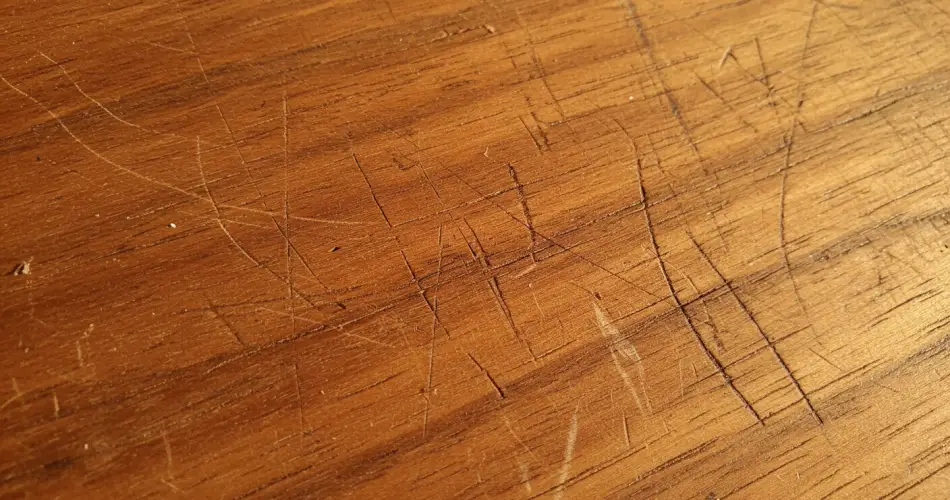Wooden furniture brings warmth, beauty, and elegance to any space. Whether it’s a dining table, a vintage cabinet, or a bedside stand, these pieces add character to your home. However, with time and daily use, scratches, dents, and small imperfections inevitably appear. Many people assume that once furniture is damaged, it must be replaced. This not only leads to unnecessary expenses but also contributes to waste.
The truth is, you don’t need to throw away a scratched or dented wooden piece. With a few simple techniques—and common household ingredients—you can restore furniture to its original charm. In this guide, you’ll discover how to fix scratches and dents in just a few seconds using natural remedies, preventive care, and even some specialized products when needed.
Quick Fixes for Scratches and Dents
Scratches and dents might look alarming, but they are rarely permanent. There are several household tricks that can help minimize or even erase these marks, depending on the severity.
-
Beeswax
One of the most effective natural remedies for wooden furniture is beeswax. This biodegradable, non-toxic product has been used for centuries to nourish and protect wood. Simply clean the surface with a damp cloth to remove dust, then rub a small amount of beeswax into the scratch or dent, following the grain of the wood. Leave it to dry for about 30 minutes, then buff the surface with a clean cloth. The wax fills the scratches, blending them seamlessly into the surrounding wood and restoring a polished, uniform appearance. -
Coffee
For darker wood, coffee can work wonders on scratches and dents. Brew a strong cup of coffee and allow it to cool. Dip a cotton ball or soft cloth into the liquid, then gently rub it over the scratch or dent. The tannins in coffee darken the wood fibers, helping blend the damaged area with the surrounding surface. This method is particularly useful for dark-stained furniture but may not be effective on lighter woods. -
Olive Oil and Toothpaste
A surprising but effective combination for small scratches on glossy surfaces is olive oil mixed with toothpaste (plain white, not gel). The olive oil moisturizes the wood, while the mild abrasiveness of the toothpaste helps smooth out fine scratches. To use this method, apply a few drops of olive oil to a soft cloth and rub it onto the affected area. Then, dab a small amount of toothpaste onto your fingertip and work it into the scratch with circular motions. Wipe away the residue with a damp cloth and repeat if necessary. This technique works particularly well on polished woods like mahogany or varnished tabletops.
Why These Methods Work
Each of these home remedies has a unique property that makes it effective:
-
Beeswax fills in the gaps created by scratches and nourishes the wood, restoring its sheen.
-
Coffee stains and blends the damaged wood fibers, reducing the visibility of scratches.
-
Olive oil and toothpaste combine hydration and gentle abrasion, making fine lines less noticeable.
While these remedies won’t repair deep gouges or structural damage, they are highly effective for everyday wear and tear.
Preventing Scratches and Dents
Prevention is always better than cure. By adopting a few simple habits, you can protect your furniture from unnecessary damage and extend its lifespan.
-
Use protective coverings: Place coasters, placemats, or tablecloths on dining and coffee tables to protect against spills, stains, and scratches.
-
Handle objects carefully: Always lift items instead of dragging them across furniture surfaces. Even soft objects can leave scratches when small particles of dirt are present.
-
Maintain stable conditions: Wood is sensitive to temperature and humidity changes. Keep your furniture away from direct heat sources and avoid drastic temperature fluctuations, which can cause wood to expand and contract, leading to cracks.
-
Clean regularly: Dust and dirt particles can act as abrasives. Wipe your furniture with a soft, dry cloth on a regular basis to prevent micro-scratches.
By following these steps, you can significantly reduce the risk of new scratches or dents forming.
When to Use Store-Bought Products
While home remedies are excellent for quick fixes, certain situations call for specialized products. If your furniture has more severe or widespread damage, consider investing in professional-grade solutions:
-
Quick repair kits: These kits often include wax sticks or touch-up markers that match common wood shades, allowing you to fill and conceal scratches with precision.
-
Furniture restoration paste: Brands like Liberon produce restorative pastes designed to nourish wood while minimizing visible scratches.
-
Anti-dent sprays: Some products on the market help reduce the appearance of small dents by rehydrating and slightly expanding compressed wood fibers.
These products are inexpensive compared to replacing an entire piece of furniture and can be a great option when natural remedies aren’t enough.
Giving Furniture a Second Life
Scratches and dents are not the end of your furniture’s story—they are part of its character. With the right care and attention, you can restore its appearance and enjoy it for many more years. Not only will you save money, but you’ll also reduce waste and maintain the sentimental value of pieces that may have been in your family for generations.
So the next time you notice a scratch on your dining table or a dent in your coffee table, don’t panic. Before rushing to replace it, try these simple tricks. You’ll likely be surprised at how effective they are. With a little beeswax, some coffee, or even a dab of toothpaste and olive oil, your furniture can look as good as new—proving that sometimes, the best solutions are already in your kitchen cupboard.



